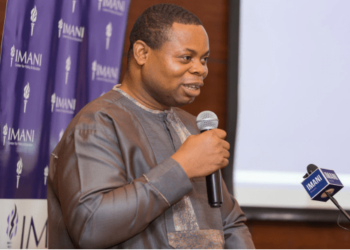Nigeria spent $2.86 billion servicing external debt during the first eight months of 2025, according to international payment data from the Central Bank of Nigeria. This accounted for 69.1 percent of the country’s total foreign payments of $4.14 billion in the same period.
The figure reflects a slight decrease from the same period in 2024, when $3.06 billion went into debt servicing, representing 70.7 percent of total foreign payments of $4.33 billion. While the 2025 figure shows a $198 million reduction compared with the previous year, the proportion of funds dedicated to debt obligations has remained persistently high. Nearly seven out of every ten dollars leaving Nigeria continues to settle external debt.
Nigeria’s repayment schedule in 2025 has been marked by volatility, with figures swinging sharply from one month to another. In January 2025, $540.67 million was spent compared with $560.52 million in January 2024, representing a fall of $19.85 million or 3.5 percent.
February 2025 recorded $276.73 million, slightly below the $283.22 million in February 2024, down by $6.49 million or 2.3 percent. March 2025, however, surged to $632.36 million against $276.17 million in March 2024, an increase of $356.19 million or 129 percent.
April 2025 reached $557.79 million, which was $342.59 million or 159 percent higher than the $215.20 million of April 2024. May 2025, on the other hand, stood at just $230.92 million, sharply lower than the $854.37 million spent in May 2024.
June 2025 recorded $143.39 million, compared with $50.82 million in June 2024, a rise of $92.57 million or 182 percent. By July 2025, debt service fell to $179.95 million, down by $362.55 million or 66.8 percent from $542.5 million in July 2024. In August 2025, payments climbed to $302.3 million, which was $22.35 million or 8 percent higher than the $279.95 million of August 2024.
Erratic Payment Trends Persist
Month-on-month trends in 2025 underscore the erratic nature of Nigeria’s debt repayments. January’s $540.67 million dropped by nearly half to $276.73 million in February, only for March to spike to $632.36 million, up by 128.5 percent.
April slipped to $557.79 million, a fall of 11.8 percent from March. May then declined further to $230.92 million, down by 58.6 percent. June fell to $143.39 million, a drop of 37.9 percent. July saw a modest rebound to $179.95 million, representing a 25.5 percent increase, before August rose sharply again to $302.3 million, a 67.9 percent jump.
The overall picture confirms that debt service remains the dominant feature of Nigeria’s foreign obligations. Between January and August 2025, $2.86 billion of the $4.14 billion total foreign payments went to debt, giving it a share of 69.1 percent. A year earlier, $3.06 billion of the $4.33 billion total foreign payments was spent on debt, amounting to 70.7 percent.
Despite spending nearly $200 million less this year, debt continues to absorb the overwhelming majority of Nigeria’s foreign exchange outflows, leaving limited resources for imports and investments.
Fitch Warns Of Mounting Pressures
Fitch Ratings has projected that Nigeria’s external debt service will increase from $4.7 billion in 2024 to $5.2 billion in 2025. This includes $4.5 billion in amortisation payments and a $1.1 billion Eurobond repayment due in November. The agency stated, “Government external debt service is moderate but expected to rise to $5.2bn in 2025 (with $4.5bn of amortisations, including a $1.1bn Eurobond repayment due in November 2025), from $4.7bn in 2024, and fall to $3.5bn in 2026.”

Fitch also pointed to a minor delay in the payment of a Eurobond coupon due on March 28, 2025, describing it as evidence of Nigeria’s ongoing public finance management challenges. While the country’s debt service levels are seen as manageable, the agency flagged rising interest costs, weak revenue performance, and constrained fiscal space as persistent risks.
Fitch said general government debt is expected to remain at about 51 percent of GDP in both 2025 and 2026. However, it highlighted the weak revenue base as a structural problem, noting that interest payments will consume a disproportionately high share of earnings.
“We expect general government revenue-to-GDP to rise but to remain structurally low (averaging 13.3 percent in 2025–2026), largely accounting for a high general government interest/revenue ratio, above 30 percent, with the Federal Government interest/revenue ratio of nearly 50 percent.”
Fitch Ratings
With nearly three-quarters of Nigeria’s international outflows still channelled into debt repayment, the country faces a difficult balancing act between meeting obligations abroad and addressing urgent domestic needs.
READ ALSO: Bulls Charge as GSE Kicks Off Month with 70% Year-to-Date Gains



















